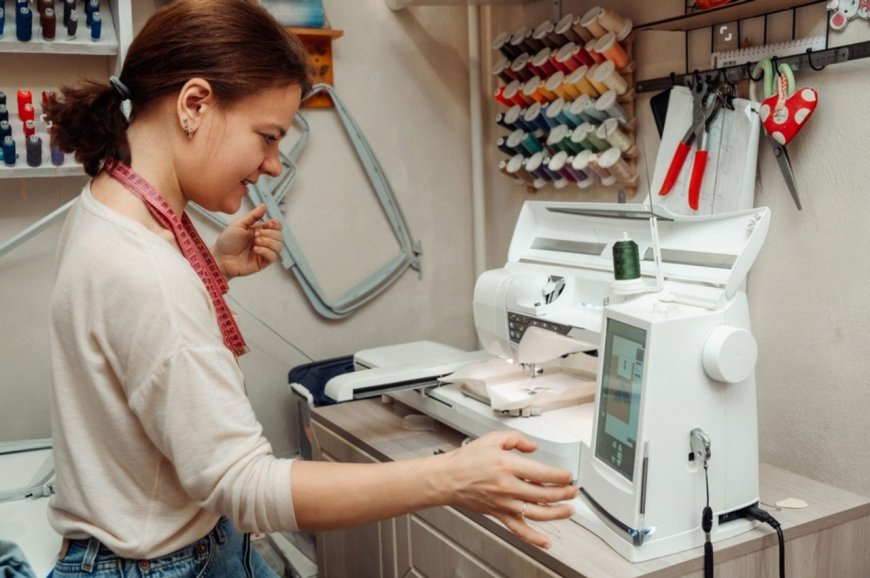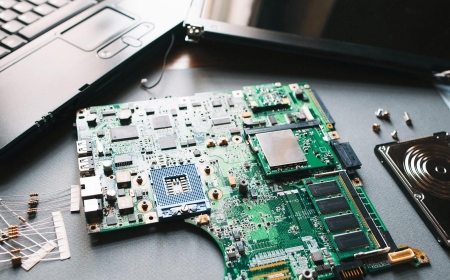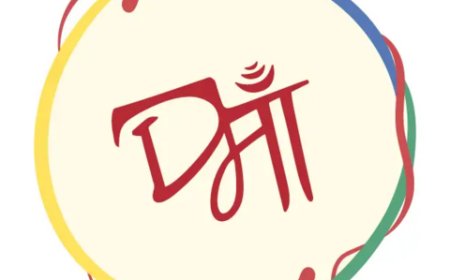Embroidery Digitizing 101: Transform Designs Like a Pro in 2025
Master embroidery digitizing in 2025 with this complete guide. Learn professional techniques to convert any design into flawless embroidery files, whether you're a beginner or upgrading your skills.

Introduction
Picture this: You've got an amazing design ready for embroidery, but when it stitches out, the details blur, the fabric puckers, and the thread keeps breaking. Frustrating, right? This is where professional digitizing embroidery makes all the difference.
Digitizing embroidery is the secret sauce that transforms regular artwork into stitch-perfect embroidery files. As we move into 2025, new tools and techniques are changing the game. Whether you're:
-
A small business creating branded merch
-
A hobbyist wanting professional results
-
An embroiderer looking to offer digitizing services
This guide will walk you through everything from basic principles to 2025's cutting-edge advancements. Let's dive in!
What Is Embroidery Digitizing?
Digitizing converts digital artwork into instructions an embroidery machine can follow. Think of it like GPS for your embroidery machine - telling it exactly:
-
Where to stitch
-
What stitch type to use
-
How dense to make the stitches
-
When to change thread colors
Without proper digitizing, even the best designs turn into messy stitching disasters.
The 2025 Digitizing Toolkit
Essential Software Options
For Beginners ($0-$200):
-
Ink/Stitch (Free Inkscape extension)
-
SewArt (Simple auto-digitizing)
-
Embrilliance Essentials (Great starter paid option)
For Professionals ($300-$2,000):
-
Wilcom Hatch 3
-
Pulse Ambassador
-
Tajima DG/ML
2025's Game Changers:
-
AI-assisted digitizing plugins
-
Cloud-based collaboration tools
-
3D stitch simulation software
Step-by-Step Digitizing Process
1. Artwork Preparation
-
Start with vector files (AI, EPS) when possible
-
Simplify complex designs (remove tiny details under 1mm)
-
Convert text to outlines
Pro Tip:Use the "Zoom Test" - if it looks pixelated at 400%, it won't stitch well.
2. Stitch Type Selection
2025's Smart Choices:
-
Satin Stitches (2025 Update):New variable-width options for smoother curves
-
Fill Stitches:Directional patterns that reduce fabric pull
-
Contour Stitches:Enhanced edge definition techniques
3. Stitch Path Engineering
Modern best practices:
-
Optimize jump stitches to minimize trims
-
Sequence colors strategically
-
Implement push/pull compensation (especially for stretch fabrics)
4. Density Settings
2025 Fabric-Specific Guidelines:
| Fabric Type | Stitches/mm | Underlay |
|---|---|---|
| Cotton | 5-6 | Edge Run + Zigzag |
| Performance Knit | 4-5 | Double Zigzag |
| Denim | 6-7 | Center Run |
| Toweling | 3-4 | Mesh Underlay |
5. Testing & Refinement
Never skip these 2025 must-dos:
-
Virtual stitch simulation
-
Small-scale test stitch
-
Fabric-specific adjustments
2025's Top Digitizing Challenges (And Solutions)
Challenge 1: Ultra-Small Designs
Solution:
-
Use micro-satin stitches (0.3mm width)
-
Increase density slightly
-
Opt for 60wt thread
Challenge 2: Stretchy Activewear
Solution:
-
Add 10-15% pull compensation
-
Use elastic underlay stitches
-
Reduce overall density
Challenge 3: Photorealistic Designs
Solution:
-
Layer multiple fill stitch angles
-
Incorporate thread blending techniques
-
Use gradient underlay
DIY vs Professional Digitizing in 2025
When to DIY:
-
Simple text-based designs
-
Personal projects with flexible timelines
-
When building long-term digitizing skills
When to Hire a Pro:
-
Complex logos with small details
-
Customer orders where quality is critical
-
Specialty techniques (3D puff, chenille)
2025 Insight:Many pros now offer "hybrid services" where they'll digitize your design then provide the file for your own use.
Emerging 2025 Trends
-
AI-Assisted Digitizing
-
Auto-suggestions for stitch types
-
Instant density adjustments
-
Predictive pucker prevention
-
-
Eco-Friendly Digitizing
-
Thread-saving stitch patterns
-
Sustainable underlay techniques
-
Water-soluble stabilizer optimization
-
-
Augmented Reality Previews
-
See how designs will look on actual garments
-
Virtual "try-on" before stitching
-
Pro Tips for 2025 Success
-
Master Multi-Hoop Digitizing
Large designs require smart segmentation - new software makes this easier than ever. -
Learn Metallic Thread Techniques
Special settings prevent breaks and shine. -
Offer Customization Options
Clients love variable data (names, numbers) - prepare templates. -
Stay Updated on File Formats
New machines support enhanced .FXY and .VP3 formats.
Common Mistakes to Avoid
-
Overlooking Fabric Differences
A hat design won't work on stretchy tees without adjustments. -
Ignoring Thread Innovation
New 2025 threads require updated tension settings. -
Skipping Software Updates
Miss out on critical bug fixes and new features.
Where to Learn More in 2025
Best Resources:
-
Wilcom's monthly webinars
-
ISS (Imprinted Sportswear Show) workshops
-
Digitizing Discord communities
-
YouTube channels like "Embroidery Legacy"
Conclusion
Embroidery digitizing in 2025 blends traditional craftsmanship with exciting new technology. Whether you're just starting or leveling up your skills, remember:
? Start with quality artwork
? Choose stitches wisely for each element
? Always test on actual fabric
? Embrace new tools but master fundamentals
The future of digitizing is bright - and now you're equipped to stitch ahead of the curve. Ready to transform your designs like a pro? Pick one technique from this guide and try it on your next project.























